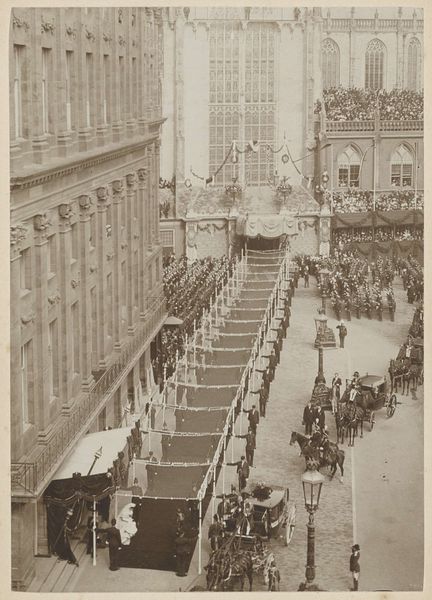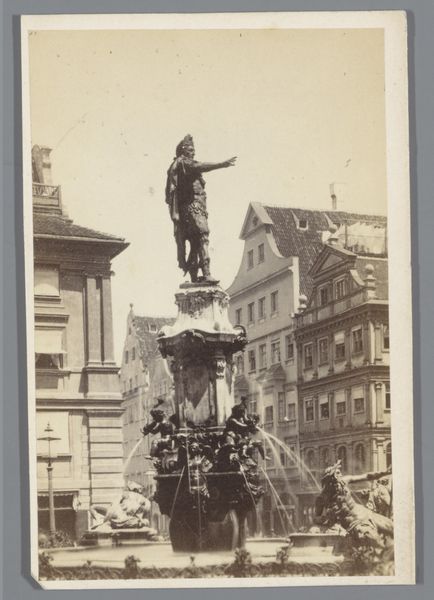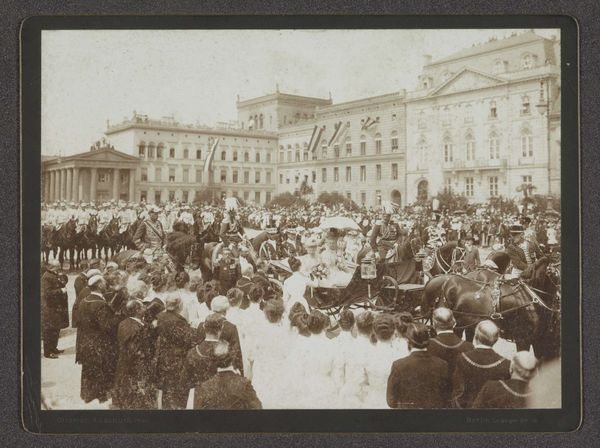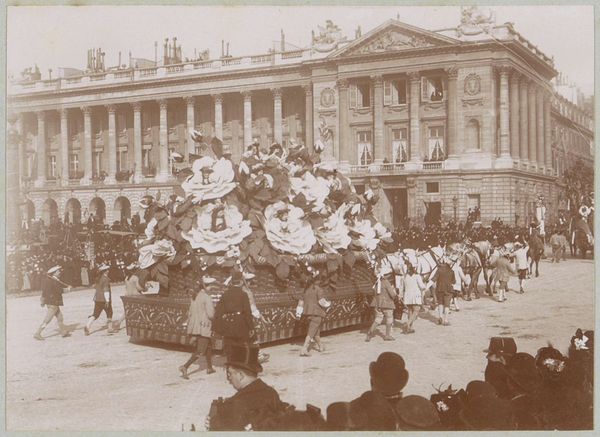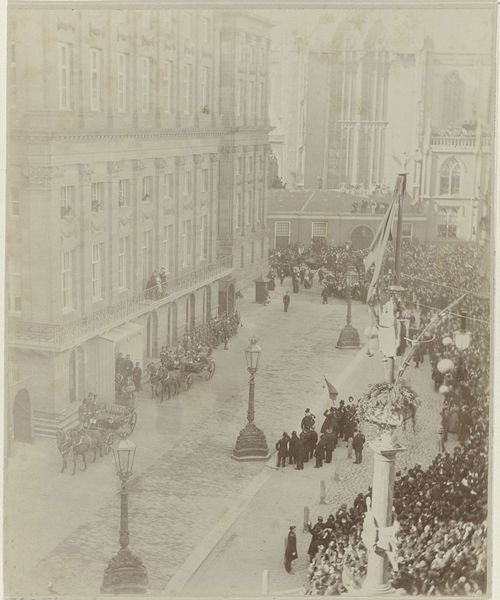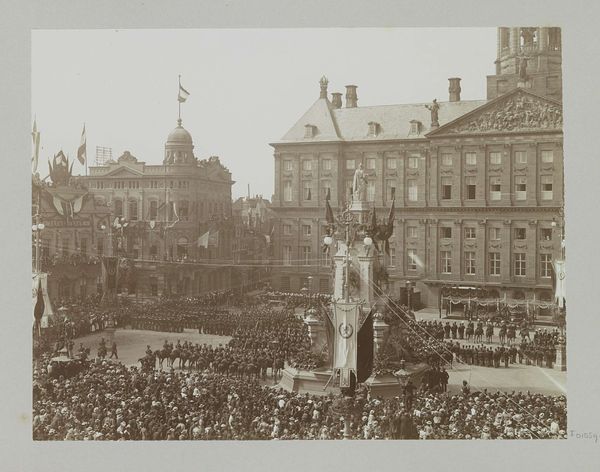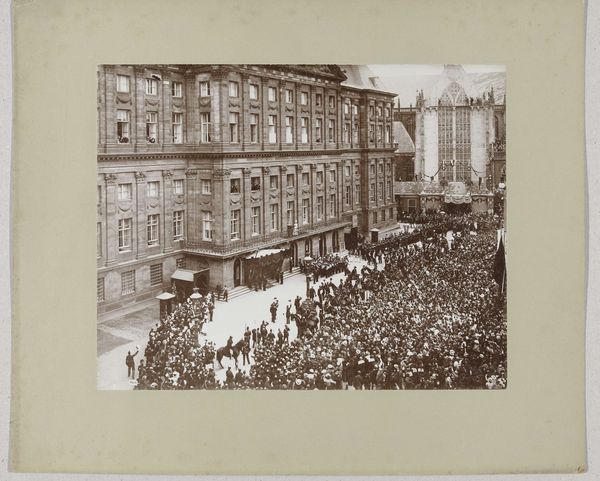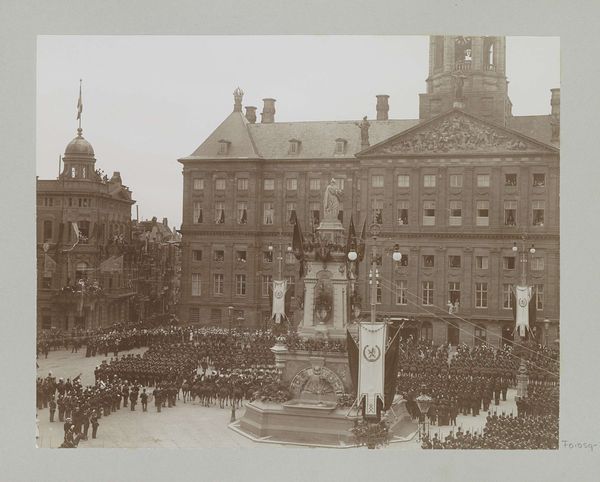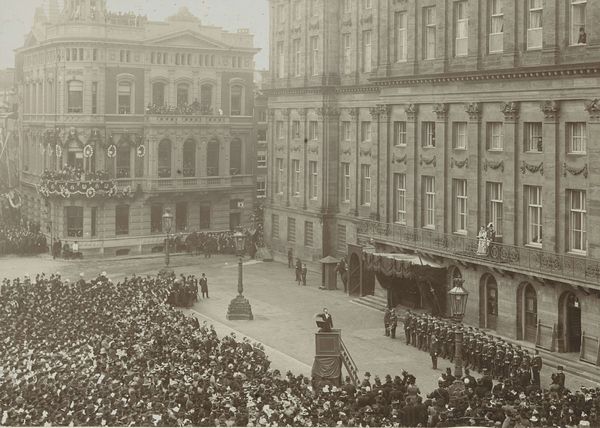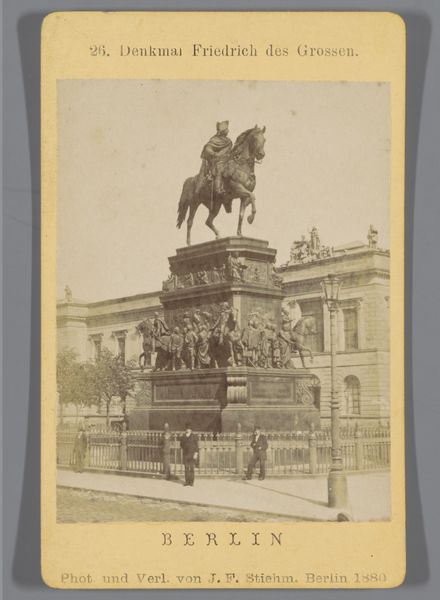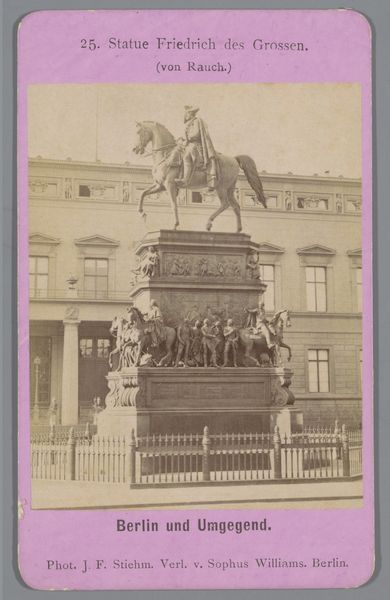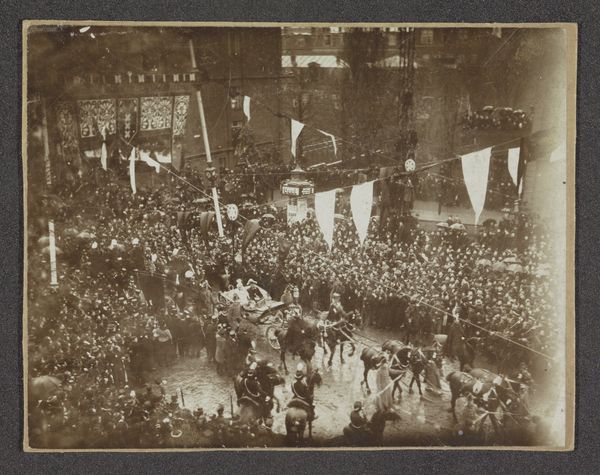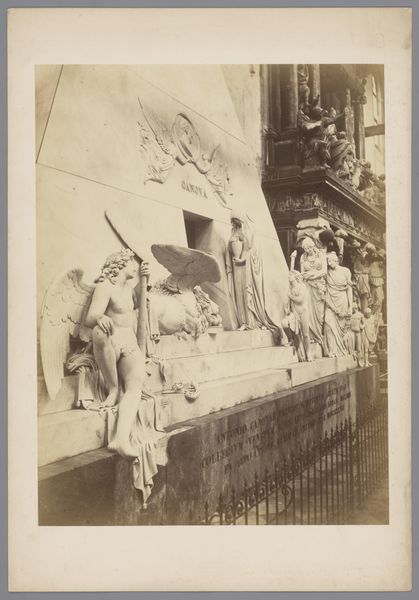
Inhuldiging van president Kruger bij de Raadzaal, zetel van de Volksraad te Pretoria Possibly 1898
0:00
0:00
photography
#
portrait
#
street-photography
#
photography
#
cityscape
#
realism
Dimensions: height 203 mm, width 146 mm
Copyright: Rijks Museum: Open Domain
Editor: This photograph, possibly from 1898 and attributed to Rudolf Steger, captures "Inhuldiging van president Kruger bij de Raadzaal, zetel van de Volksraad te Pretoria," which, as I understand it, depicts President Kruger's inauguration at the Council Chamber in Pretoria. It’s a sepia-toned image filled with people, giving it a sense of bustle. I’m curious, what catches your eye most when you look at this scene? Curator: Well, considering this photograph through a historical lens, it's impossible to ignore the deliberate staging and the implicit power dynamics it reveals. The photograph clearly presents a carefully constructed image of political legitimacy and popular support. Notice the architectural backdrop and how it symbolizes the power of the state. Editor: Yes, the architecture is certainly imposing. But what about the crowd itself? It feels almost performative. Curator: Exactly. It’s about visually cementing Kruger’s authority, isn’t it? Ask yourself, who are these people? The presence, and more importantly the *representation*, of a diverse populace was crucial to constructing a specific narrative of national unity around Kruger’s presidency. Consider the political climate of the time, the looming shadow of British imperialism. Editor: So, you're saying the image functioned as a kind of political propaganda? Curator: To a degree, yes. It presents an idealized version of the political landscape, aiming to consolidate power and project an image of strength. Also, it begs the question, how accessible *was* this image? Who was its intended audience? Was it circulated locally, internationally? These details greatly impact its social function. Editor: That's a compelling perspective. I initially saw a crowded scene, but now I see it as a carefully managed presentation of power. Curator: Exactly! By interrogating the historical context and understanding the mechanics of image-making, we can unlock the deeper meanings embedded within it. It speaks volumes about the relationship between art, power, and public perception. Editor: This makes me appreciate how photography at this time was not just about documentation, but active world-making. Thank you for this rich explanation.
Comments
No comments
Be the first to comment and join the conversation on the ultimate creative platform.
